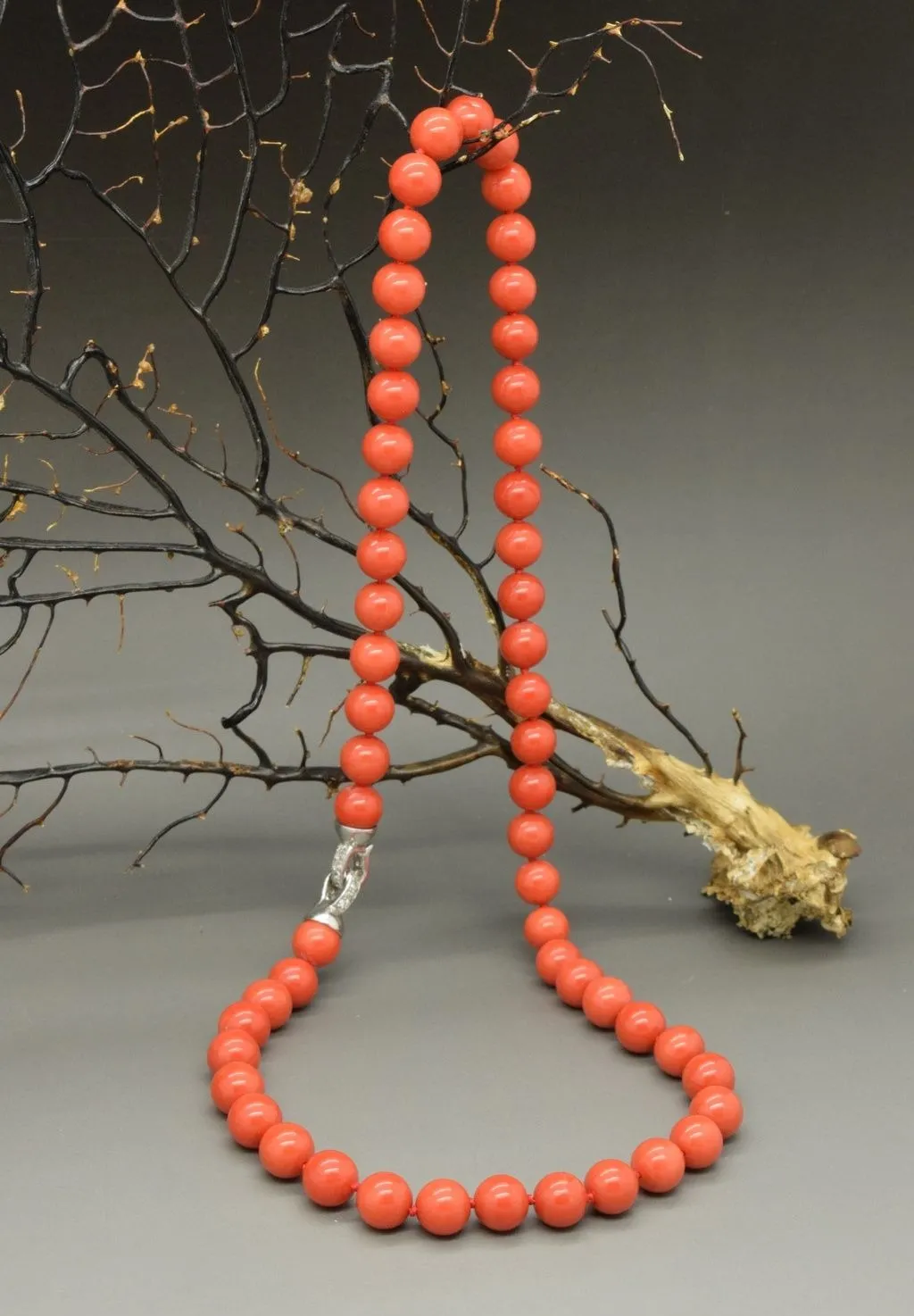▲More wonderful content is available in the public account of China Gem Magazine
Human use of coral dates back to ancient Greek and Roman times. Red corals from the Mediterranean Sea, then known in Japan as Kowatari ("Persian imports"), were introduced to Japan via the Silk Roads during the Nara period (710-784 AD). In medieval Europe, coral was heavily used in the decoration of religious ceremonies and the making of rosaries.

In the early 19th century, coral was very popular in Britain. Raw raw coral was imported from Naples, Italy, to England, where jewellers used different motifs such as cherries, berries and floral shapes to create exquisite coral jewelry and carvings. The string of coral beads became the most popular gift for young girls when they were baptized. In Scotland, corals are believed to make young girls more beautiful and healthy.
According to records, the word "coral" in China's literature first appeared in the pre-Qin era, and the "Classic of Mountains and Seas and the Classic of the Sea" recorded: "Corals go out to sea, two or three feet tall, have branches and leaves, and are shaped like small trees." It also describes the regrettable story of the inability to catch corals (this coral was not identified as a gem coral), when red coral was mainly used for decoration and decoration. The "Silk Road" of the Han Dynasty brought corals from other regions to The country, and for a while, the wind of coral prevailed, and it was described in the Han Dynasty's "Miscellaneous Records of Xijing": "There are coral trees in the pond of grass, one foot tall and two feet high, and there are four hundred and sixty-two on it, which were sacrificed by Zhao Tuo, the king of South Vietnam, and the number is beacon tree, which is always burning at night." Emperor Wu of Han also enshrined the coral jade tree bonsai in the shrine.
It can be seen that since ancient times, both Chinese and foreign countries have regarded corals as rare treasures and used corals as ornaments. Before the 18th century, people had been mistaken for corals as marine plants, and now for some people who lack zoological knowledge, I am afraid that there will still be such a misunderstanding. The skeleton of the coral, that is, the transverse section of the coral body, can be seen in the concentric ring band structure and the radial loading line of the transection ring belt; on the longitudinal section, there are often longitudinal lines caused by axial "pipes". This organic structure is one of the important bases for identifying true and false corals; it is also this structural feature, coupled with the fact that some coral bodies have a similar shape (clump shape) to trees, making people regard corals as marine plants. Corals are actually marine coelenterates, made up of soft bodies and skeletons.
Corals used as gem material can only be the bones of the coral, i.e. coral bodies. Due to the growth mode and structure of corals, most corals tend to be hollow, and the bone is not suitable for processing and polishing, so not all corals can be used as gem materials; only those corals with a dense and uniform texture and good polishing properties can be classified as gemstones. Therefore, although there are many types of corals, there are not many types that can be used as gemstones.
Although hard corals are important reef-building corals, the bones of such corals are not suitable as gem materials. The vast majority of the corals used in gemstones are eight-shot corals, also known as eight-ample corals. They mostly live in tropical or subtropical coastal areas or sub-coastal areas. Eight-shot corals come in a variety of forms, some with calcareous bones and some with bones. Corals used as gem materials can be divided into two categories, calcareous corals and corals according to the composition of the bones.
The main component of calcareous corals is calcium carbonate, in addition to about 3% magnesium carbonate and 1.5% to 4% organic matter, as well as trace amounts of silicon and iron. The presence of organic matter increases the toughness of corals, giving them better processing and polishing properties. The color of calcareous corals is mostly white or off-white, and it is only when they contain a considerable amount of different impurities that it is possible to appear red, pink, orange red and other colors. Therefore, affected by many factors such as the living environment, the same coral can have different colors, and different types of corals can show the same color.
The main component of corals is organic matter. The refractive index is 1.54 to 1.56, but the polishing performance is good, and it has a certain elasticity, which can be bent by heating; the color tends to be black.
(The image comes from the Internet, if there is infringement, please contact to delete)
Original is not easy, copyright, if you need to reprint, please contact the "China Gem" magazine public number and indicate the source.